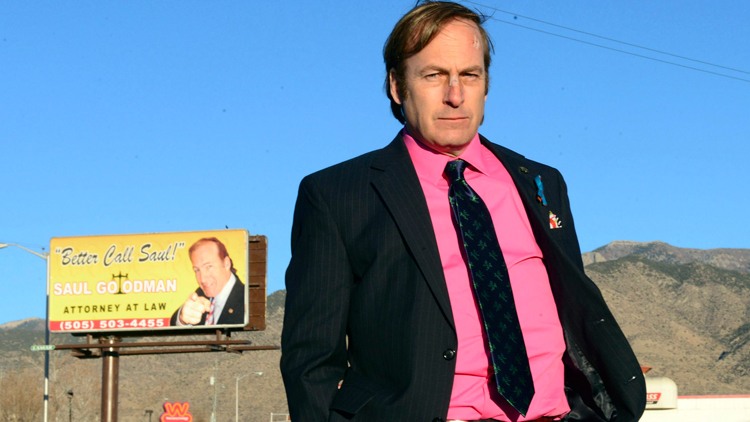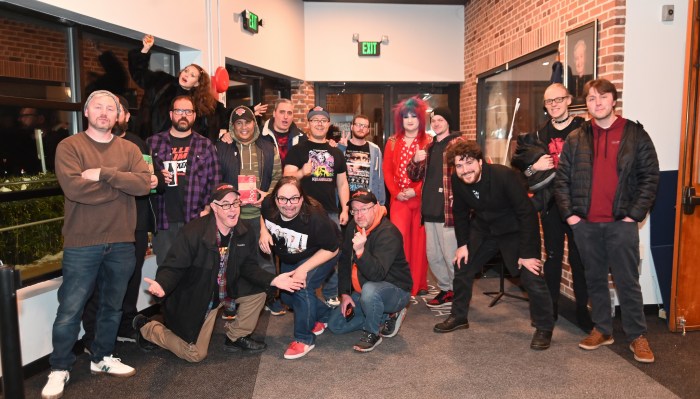Better Call Saul, the spinoff prequel to Breaking Bad that debuted last night on AMC, opens as less the beginning of a story than a foundational layer of a puzzle. This was a necessary narrative technique that solves what we’ll call writer Vince Gilligan’s Titanic issue: How to make a show interesting when the audience already knows how it ends.
Gilligan succeeds by introducing several mysteries to capture the imagination of his Breaking Bad audience, but even more so by relying on what he does best—building strong, complex, and likeable characters. What made Breaking Bad so compelling beyond the storyline of turning Mr. Chips into Scarface and beyond the novelty that had the audience rooting for an antihero were always the characters, played by actors so brilliant at their craft that they stayed with us long after the closing credits rolled. In Bob Odenkirk, Gilligan has hit another casting home run.
Odenkirk’s Saul (or Jimmy?)—an Albuquerque criminal attorney—makes art of the fancifully wrought dialogue, punctuated with regional dialect and clever twists and turns of phrase. He captures the simultaneous desperation and humor in the main character. Saul is drawn in layers and hypocrisies. He is comic while being tragic; he is in an unrelenting scammer, but also a caretaker whose goodness is just below the surface. The audience knows how far he strays into an immoral path.
Better Call Saul doesn’t rely on Breaking Bad’s characters to propel it forward, although two make appearances as surprise cameos that help the continuity between shows. They also tickled Breaking Bad watchers with recognition. Seeing Saul before his unholy connection with Walter White and the dark path he is led down allows a lightness for the humor aspects of his character to shine through, but also for a slow and deliciously intricate painting of his portrait. He might be poor, but he’s smart. He might play suckers for all he can get out of them (See: Slippin’ Jimmy) but he is host to Chuck, a brother with an unknown illness that not only costs him what is left of his reserves of cash, but illustrates his deep humanity.
There is a scene early on when two young scammers attempt to take him for $500 with a poorly executed skateboard scheme. They crash into his moving car and concoct an elaborate show to bilk him out of cash. Of course, Saul doesn’t buy it. This is a classic case in the lesson of “Don’t play a player.”
This scene is telling for the pilot of the show in that it demonstrates that Saul is no sucker. He is savvy, both on the streets and in the courtroom. His older brother advises him to stay on the straight and narrow, to make his bones as an underpaid public defender. Saul, however, is both too smart and not smart enough to follow this advice. Like Walter White, his is simply too crafty to walk the paths of others, yet not quite adept at making his sharpness work for him. That pull to the unsavory will be the road that leads him to Walter White, the eventuality of Breaking Bad, and the opening scene of a mall-working Saul in a witness-protection-type scenario, shown in black and white not only to differentiate it from the flashbacks of the series’ actions, but to demonstrate the bleakness of his eventual circumstances.
Breaking Bad fans came to the series with a question: Can Bob Odenkirk pull off an entire show? Will there be glimpses of Walter and Jesse?
They are left with more questions: How did Jimmy McGill become Saul Goodman? What exactly is wrong with Chuck? The fact that these inquiries dominate the minds of watchers, Breaking Bad perhaps temporarily forgotten, is possibly more important than their resolution. We can assume that they will be answered in Vince Gilligan’s own carefully plodded timeframe. And we can also assume that whatever it is we might imagine them to be, they won’t match the brilliant detail and imaginative vastness of Gilligan’s mind.
This we know for certain: Those answers will be a blast to get to.































